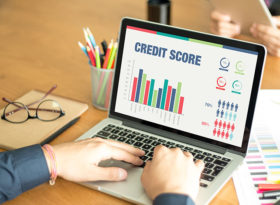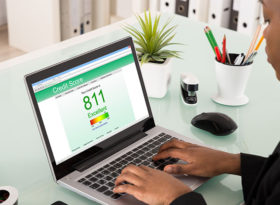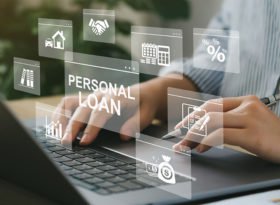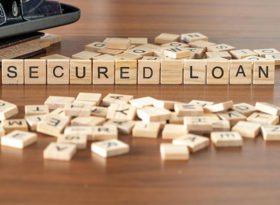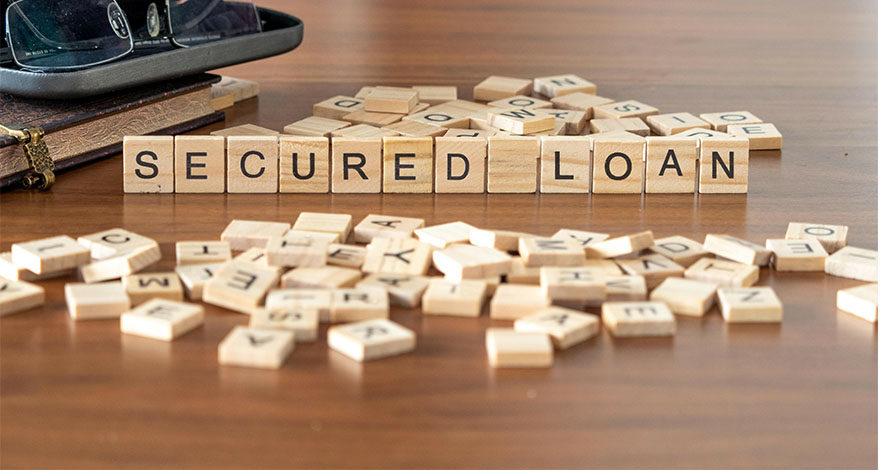 Short Term Loans
Short Term Loans
What is a Secured Loan and How Does it Work?
If you’re wondering about what is a secured loan, or if you’re thinking about taking one, you’ve just come to the right place. We’ll explain to you what a secured loan is, how it works, how to get one, and more. But that’s not all—after you’ve read about secured loans, we figured that Credit24 unsecured loans might be interesting for your needs, so we’ll introduce them as a great alternative for borrowing money. But more on that later. For now, let’s dive into the secured loans.
Learn more about Credit24 unsecured loans
What is a secured loan?
A secured loan is a type of borrowing that requires collateral—an asset that the lender can claim if you default on the loan. And that collateral can be anything of value, such as property, vehicles, or cash. This collateral reduces the lender’s risk, often resulting in lower interest rates compared to unsecured loans. And that’s why secured loans are more common for large loan amounts, or when the borrower has a low credit score.
Basically, a secured loan involves providing something of value as security. This means that in exchange for the loan, you give the lender a claim to an asset, which makes secured loans an attractive option for those needing significant funds or having less-than-ideal credit scores. So, summing up, what does a secured loan mean? Essentially, it’s a financial agreement that offers lower risk to lenders in return for favourable terms to borrowers.
How does a secured loan work?
When you apply for a secured loan, you must provide collateral, which can be in the form of cars, property, or other valuable assets. This collateral secures the loan, meaning that if you fail to repay it, the lender has the right to seize the asset to recover their losses.
Ok, the secured loan definition is pretty straightforward: it’s a loan backed by collateral. So here’s a breakdown of how secured loans usually work, with some important terms you should know about if you’re thinking to ask for a secured loan:
- Collateral requirement: Secured loans need collateral, such as cars, property, or money in savings accounts.
- Asset seizure: If you miss repaying the loan, you risk losing those assets.
- Ownership retention: Meeting the terms of the loan contract allows you to retain ownership of your collateral.
- Contract terms: It’s important to know the contract well; late repayments might be subject to fees rather than immediate asset loss, so make sure you read the terms carefully.
By understanding how a secured loan works, you can make more informed borrowing decisions. Whether it’s a secured personal loan or a secured car loan, the principles remain the same: provide collateral, comply with the terms, and manage the repayment to keep your assets safe.
Secured loans often come with more favourable terms than unsecured loans because the lender’s risk is mitigated by the collateral. However, this also means that the stakes are higher for the borrower, as defaulting on the loan can lead to the loss of the collateral asset. It’s essential to carefully consider the terms and conditions of the loan and ensure that you can meet the repayment schedule.
When choosing a secured loan, it’s important to understand all aspects of how it works. The process usually involves the following steps:
- Application and approval: You apply for the loan by providing details about the collateral and your financial situation. The lender assesses the value of the collateral and your ability to repay the loan.
- Loan agreement: If approved, you sign a loan agreement that outlines the terms, including the repayment schedule, interest rate, and any fees.
- Collateral pledge: You pledge the collateral, which the lender holds a claim to until the loan is repaid in full. In Australia the secured property will be entered into the government’s Personal Property Security Register.
- Loan disbursement: The lender disburses the loan amount to you, either as a lump sum or in instalments, depending on the agreement.
- Repayment: You make regular payments according to the schedule. As long as you meet the terms, you retain ownership of the collateral.
- Collateral release: Once the loan is repaid, the lender releases the claim on the collateral, and it fully belongs to you again.
What if You Default on a Secured Loan?
Defaulting on a secured loan in Australia can lead to serious consequences, similar to those in other countries. You can lose your collateral, suffer a significant negative impact on your credit score, plus other potential legal consequences. That’s why understanding the terms of your loan agreement, maintaining open communication with your lender, and seeking professional advice can help you navigate financial difficulties and avoid default.
Here’s what you need to know about the potential outcomes, and what steps will typically be taken:
Asset Seizure
When you fail to make the agreed-upon payments on a secured loan, the lender can take possession of the collateral. This process, known as repossession or foreclosure, allows the lender to sell the asset to recover the outstanding loan balance.
- Repossession: For loans secured by vehicles or other movable assets, repossession is common. The lender will take back the vehicle and sell it to recoup their losses.
- Foreclosure: For loans secured by real estate, the lender can initiate foreclosure proceedings. This involves legal action to take ownership of the property, which can then be sold to pay off the loan.
Grace Period
As common practice, lenders give a grace period before taking action to repossess or foreclose on the collateral. This period allows you to make up for missed payments and avoid losing your asset. The specifics of the grace period, including its length and any associated fees, will be outlined in your loan agreement.
Impact on Credit Score
Defaulting on a secured loan will negatively impact your credit score. This adverse mark can stay on your credit report for up to seven years, making it more challenging to obtain credit in the future. A lower credit score can result in higher interest rates and less favourable loan terms when you do qualify for credit.
Additional Legal Consequences
In some cases, if the sale of the repossessed or foreclosed asset does not cover the full amount of the outstanding loan, you may still be liable for the remaining balance. The lender can take legal action to recover this deficiency, potentially leading to wage garnishment or other legal remedies.
Communication with Lender
If you anticipate difficulty in making your loan payments, it’s crucial to communicate with your lender as soon as possible. Many lenders are willing to work with borrowers to find a solution, such as:
- Loan modification: Adjusting the terms of the loan to make payments more manageable.
- Forbearance: Temporarily pausing or reducing payments during a period of financial hardship.
- Repayment plan: Establishing a plan to catch up on missed payments over time.
By proactively addressing financial difficulties, you may be able to avoid the severe consequences of defaulting on a secured loan.
Practical Steps to Take if You Default
- Review your loan agreement: Understand the terms related to default, including the grace period and any fees associated with late payments.
- Contact your lender: Communicate openly with your lender about your situation. They may offer solutions to help you get back on track.
- Seek financial counselling: Professional financial counsellors can provide advice and support to help you manage your debt and explore your options.
- Consider selling the asset: If feasible, selling the collateral yourself may help you pay off the loan and avoid the repossession or foreclosure process.
- Prioritise debt repayment: Focus on managing your budget and prioritising your secured loan payments to prevent further escalation of the situation.
What assets can be collateral in a secured loan?
Secured loans require valuable assets as collateral. Common examples include:
- Property: Real estate or land
- Vehicles: Cars, motorcycles, boats
- Cash: Savings accounts, certificates of deposit, money market accounts
- Investments: Shares, stocks, bonds, mutual funds
- Jewellery: High-value items
- Collectibles: Art, antiques, rare items
- Precious Metals: Gold, silver
Any asset that holds significant value and can be easily liquidated may serve as collateral for a secured loan. It’s important to choose an asset that you can afford to lose in the worst-case scenario, as defaulting on the loan will result in the lender taking possession of the collateral.
Which is an example of a secured loan?
Secured loans are those that require collateral. The most common examples are home and car loans. However, there are other types as well:
Home loans (mortgages)
A home loan uses the property you are buying as collateral. If you fail to make payments, the lender can foreclose on the property.
Mortgages are long-term loans, often with repayment terms of 15 to 30 years. The interest rates are typically lower than other types of loans due to the collateral. However, failing to make payments can lead to the loss of your home through foreclosure.
Car loans
A car loan uses the vehicle as collateral. Defaulting on the loan can result in the lender repossessing the car.
Car loans are usually shorter-term loans, ranging from three to seven years. The interest rates can vary based on your credit score and the loan term. Since the car serves as collateral, failure to make payments can result in repossession.
Home equity loans
This type of loan allows you to borrow against the equity in your home. The house is the collateral, and failure to repay can lead to foreclosure.
Home equity loans provide a way to access the equity you’ve built up in your home. They can be used for various purposes, such as home improvements or debt consolidation. However, using your home as collateral means that failure to repay can result in foreclosure.
Secured personal loans
These loans can be secured against various assets like savings accounts or investment accounts. The terms vary based on the lender and the collateral provided. A secured personal loan meaning is that it leverages your personal assets to secure the loan amount.
Secured personal loans offer flexibility in terms of the collateral used. They can be a good option if you need funds for personal expenses and have valuable assets to pledge. The interest rates and terms will depend on the collateral and your creditworthiness.
Business loans
For business financing, assets such as equipment, inventory, or real estate can be used as collateral.
Business loans can help companies expand, purchase equipment, or manage cash flow. The collateral used can be business assets like machinery or property. Failure to repay the loan can result in the loss of these business assets.
Secured credit cards
These cards require a cash deposit as collateral. The deposit usually matches your credit limit and is used if you default on payments.
Secured credit cards are a good option for building or rebuilding credit. They function like regular credit cards but require a cash deposit that acts as collateral. If you fail to make payments, the issuer can use the deposit to cover the debt.
How to choose a secured loan?
Choosing the right secured loan involves evaluating your financial situation and the available options. Here’s a more detailed look at what to consider:
- Type of collateral: Different loans may require different types of collateral. Ensure the asset you are willing to pledge meets the lender’s requirements and that you are comfortable with the risk of losing it if you default.
- Interest rate/APR: The Annual Percentage Rate (APR) includes the interest rate and any additional fees, providing a clearer picture of the loan’s total cost. Compare APRs from multiple lenders to find the most affordable option.
- Fixed or variable rate: Fixed rates offer stability with consistent payments, while variable rates might start lower but can fluctuate. Consider your financial stability and risk tolerance when choosing between the two.
- Additional fees: Origination fees, prepayment penalties, and late fees can add to the cost of the loan. Understand these fees upfront to avoid surprises later.
- Default terms: Know the terms under which the lender can seize your collateral. Some loans offer grace periods or late fee options before taking such drastic measures.
- Loan amounts: Ensure the loan amount meets your needs. Some lenders have minimum and maximum loan amounts that might not align with your requirements.
- Credit score and income requirements: Each lender has specific criteria for credit scores and income. Verify that you meet these requirements to avoid application denials.
- Unsecured options: In some cases, an unsecured loan might be a better option, especially if you lack collateral or prefer not to risk your assets. This is why we think that Credit24 might be a good alternative for you. But be sure to compare the terms and interest rates of both secured and unsecured loans to make an informed decision.
Secured loan or unsecured loan: which one to choose?
Secured loans and unsecured loans each have their pros and cons. Here’s a good breakdown to help you see it more clearly:
Secured Loans:
| Pros | Cons |
|---|---|
| Lower interest rates | Risk of losing collateral |
| Higher borrowing limits | More stringent terms and conditions |
| Easier approval with low credit scores |
Unsecured Loans:
| Pros | Cons |
|---|---|
| No collateral needed | Higher interest rates |
| Faster approval process | Lower borrowing limits |
| Less risk of asset loss | Stricter credit requirements |
Bottom line: Secured loans can be a good idea if you need a large loan amount and have valuable assets to use as collateral. However, unsecured loans might be better if you lack collateral or prefer less risk to your assets, even though the loan cost might not be so favourable to you.
Meet Credit24, an alternative to secured loans
With Credit24, you don’t need collateral. You also benefit from an easy online application, quick check and approval, and fixed repayments. If your online loan is approved—and usually you get an immediate response—the money can be deposited into your account within 60 seconds*. This makes Credit24 a convenient and fast alternative to secured loans.
*Money paid out within 60 seconds of loans being approved or a withdraw made on a Line of Credit to PayID enabled banks.
Learn more about Credit24 unsecured loans
Disclaimer:
IPF Digital Australia Pty Ltd, trading as Credit24, ABN 59 130 894 405. Australian Credit Licence 422839. The information in this article is of general nature and does not take into consideration your objectives, financial situation or needs. Lending criteria, fees and charges apply. For more information about our products, eligibility criteria and terms and conditions, please visit www.credit24.com.au.

